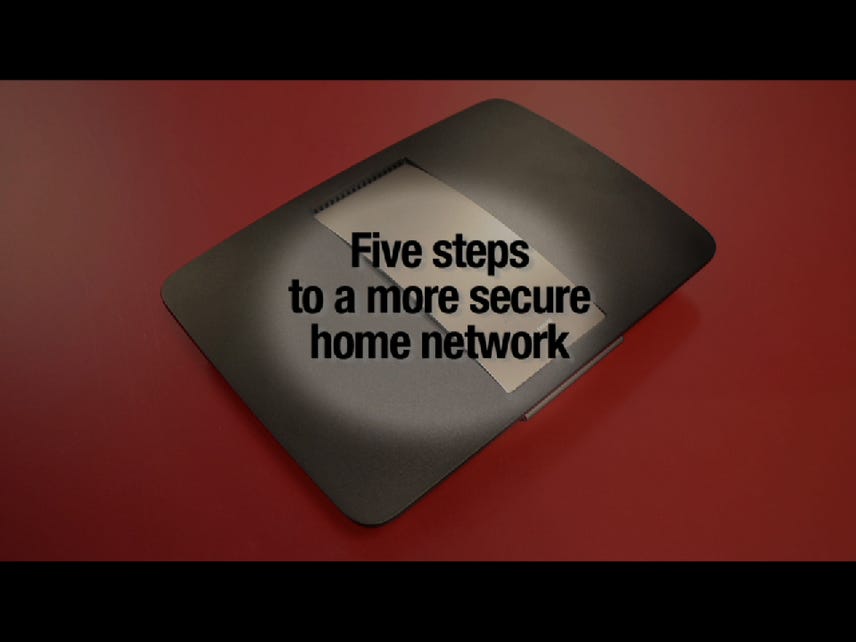
Hello.
So, you think your home network is secured, well think again.
Because recently, there's a report saying that most home router can be hacked, but no worries.
I'm here to tell you that, it should be okay, as long as you follow my 5 simple steps I'm talking about today.
And by the way, I'm Dong Ngo [unk] know that.
So, let's start.
By the way, all these 5 steps require the access to the router's web
interface and if you don't know how to get to it, make sure you check out my previous video on the subject matter.
Now the first step is that you have to equip your Wi-Fi network basically giving it a password so that only you and those you trust can add Wi-Fi devices to your network.
Now, this password has to meet three criteria.
It has to be hard to guess but easy to remember and easy to type in on a small screen.
So, think of a convention for example, you can use a straight line on a keyboard such as Q-W-E-R-T-Y
plus your postal home zip code and that would do.
You can always throw in more numbers or use a different straight line just, you know, go with that convention.
Now, the second step you need to change the default important information.
They are called default because they are public knowledge and everybody knows.
The two of them need to be changed are the default IP address and the default login password.
The IP address can be changed to almost anything you want.
So, instead of a default 192.168.1.1, you can make it
10.11.12.13 or 40.50.60.69, basically, have fun with the numbers.
Note that one IP has been changed, you have to use the new IP address to access the router web interface.
Changing the IP address actually help greatly reduce a chance that your router can be hacked from outside.
Now, the router default login password has to be of course, hard to guess and different from the Wi-Fi password I talk about earlier.
Third step.
Do not turn on any remote access feature unless you know very well what you're doing.
These features include FTP or remote management, and if you do turn them on, make sure you put on restriction.
You secure HTTP or use a non-convention port numbers.
Now, the fourth step, make sure you upgrade the router to the latest firmware.
This can be as easy as a few clicks or maybe you have to download the firmware and do that manually.
You should do that at least one when you first set up the home
network.
Remember, do not do anything during the upgrading process because if you turn the router off doing the upgrading process, you can actually break your home router.
And the last step is that make sure you log off the web interface when you are done.
For some router, this mean you just close the web interface.
One more thing, if you use a power adapters for your home network, make sure you turn on the security feature on all of them.
And that's it, you should be okay now.
But if you are not, then you gotta be a really bad--
or really important person and in that case, you need a professional to look up your network for you.
And speaking of professional, if you are a bad person and want to be good, call me.
[unk] and that's because I am Dong Ngo, and this has been a quick guide on how to keep your home network secure.